Welcome to the website
of Haus der Kunst in Easy Read!
Haus der Kunst is a public museum in Munich.
Here you can find important information in Easy English.
1. Where is Haus der Kunst?
The address is:
Prinzregentenstraße 1
80538 München
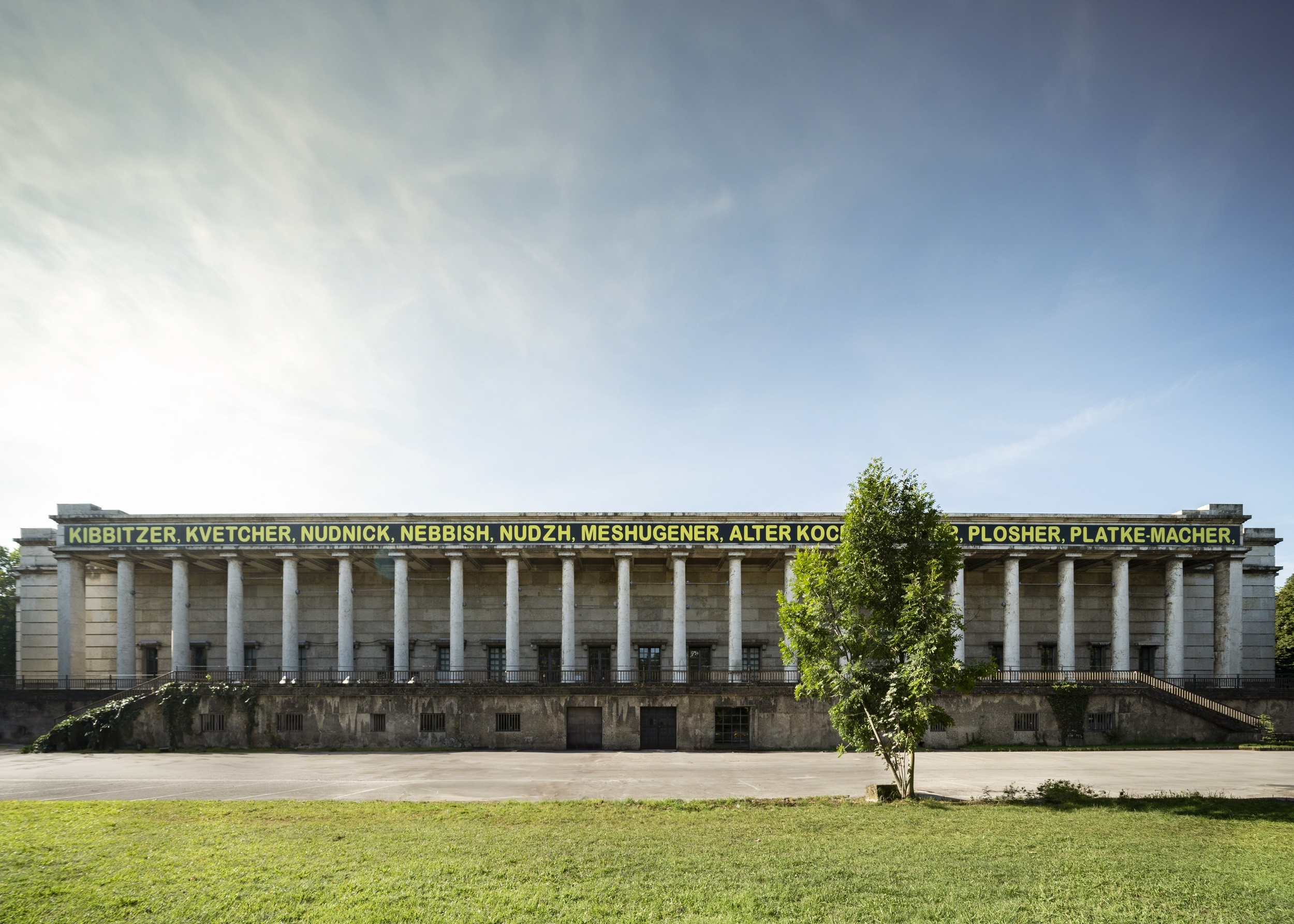
2. When is Haus der Kunst open?
Haus der Kunst is open on these days:
- Monday, Wednesday, Friday, Saturday and Sunday: from 10 am to 8 pm.
- Thursday: from 10 am to 10 pm.
- Tuesday is closed.
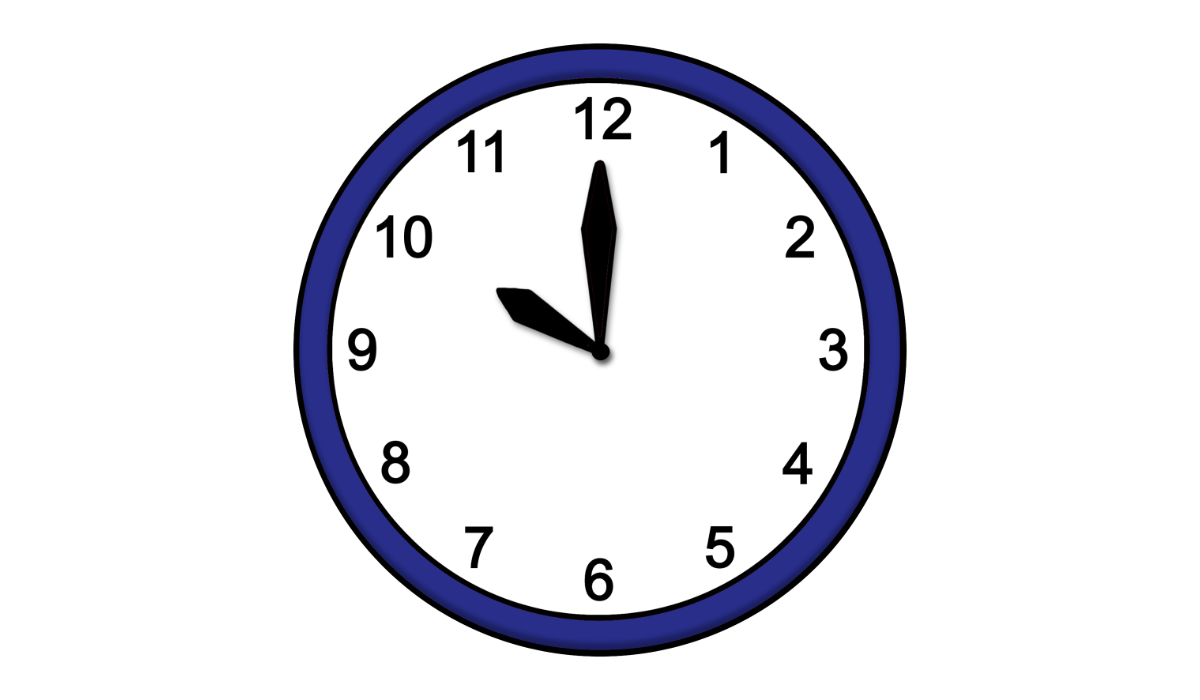
3. How much does admission cost?
There are three different types of tickets:
Haus-Ticket Large, Haus-Ticket Small and Time slot ticket.
► Haus-Ticket Large
You need this ticket for the exhibition “Philippe Parreno. Voices” and “Shu Lea Cheang. KI$$ KI$$”.
It costs:
- 15 euros
- 11 euros reduced
- 5 euros for students and school children
► Haus-Ticket Small
This Ticket is just for the exhibition “Shu Lea Cheang. KI$$ KI$$”.
It costs:
- 10 euros
- 8 euros reduced
- 5 euros for students and school children
► Time slot ticket for LSK Gallery.
This ticket is only valid for the LSK Gallery.
This gallery is located at the back of the building.
The time slot ticket specifies a fixed period of time:
You can only enter the exhibition during this period.
It costs:
- 9 euros
- 6 euros reduced
- 5 euros for students and school children
► Who gets a reduced ticket?
For example:
- Pensioners
- People with disabilities with a disability card
and a degree of disability of 50 or more (GDB 50)
► Who gets a free ticket?
- Children under the age of 12
- Owners of an annual ticket from Haus der Kunst
- Friends of Haus der Kunst
- Refugees with a residence permit
- Students of the Academy of Fine Arts or art history students
- Accompanying persons of people with severe disabilities with ID B
- For all visitors:On the last Friday of every month, admission is free from 4 pm.The museum is then open until 10 pm.
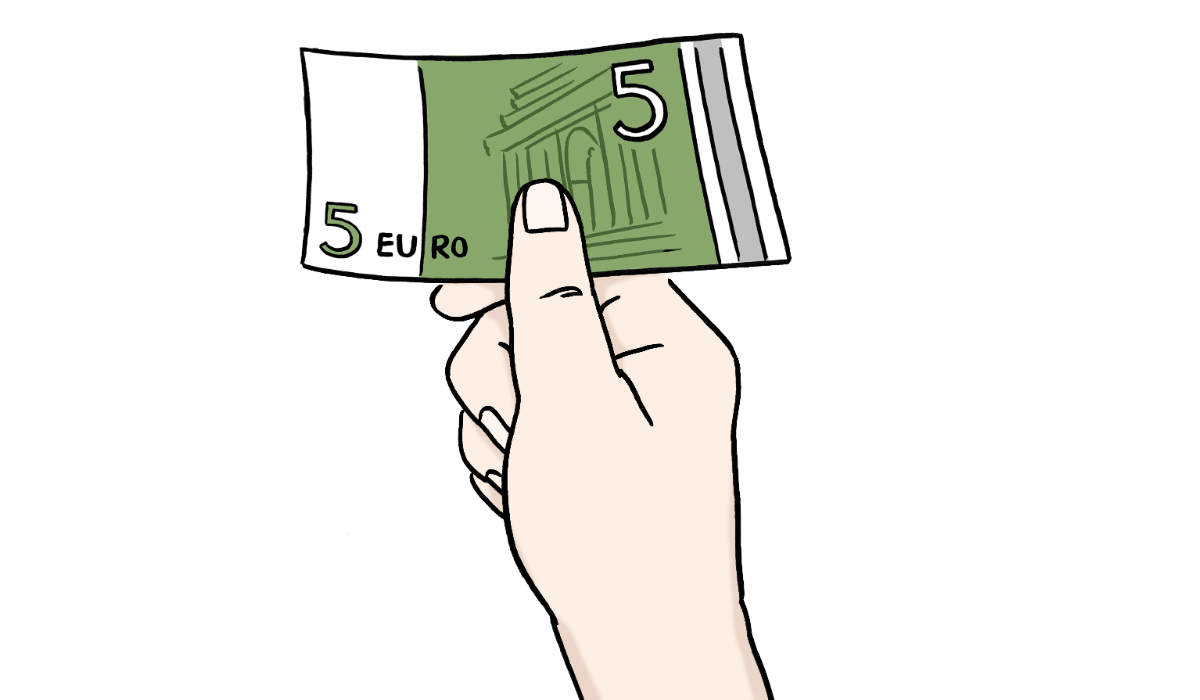
4. Do you have any questions about your visit?
Don't know which ticket you need?
Then give us a call!
Telephone: 089 - 211 27 113
Phone time: from Monday to Friday 10 am to 5 pm.
Or send us an e-mail.
E-mail: mail@hausderkunst.de
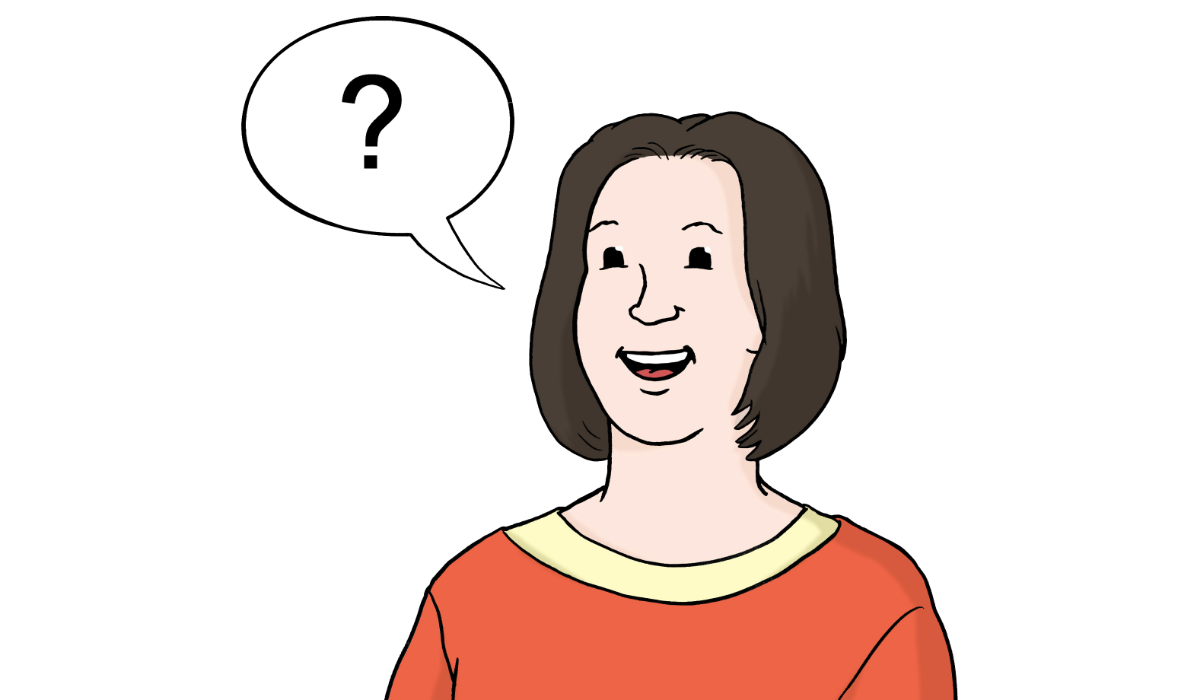
5. How to get to Haus der Kunst?
- Bus: Bus 100 to the bus stop: Königinstraße
- Underground:
- U 4/5 to stop: Lehel and then by foot.
Or take Tram 16 in the direction of Effnerplatzto the stop: Nationalmuseum / Haus der Kunst. - U 3/6 to the stop: Odeonsplatz.
Then continue by Bus 100 Richtung in the direction of Königinstraße.
- U 4/5 to stop: Lehel and then by foot.
- S-Bahn: S-Bahn to Isartor.Then take Tram 16 in the direction of Effnerplatz to the stop Nationalmuseum / Haus der Kunst.
- Car: Behind Haus der Kunst there is a large car park for our visitors.
The car park costs a fee.
There are 2 free disabled parking spaces.
Please come with an accompanying person
to make your way from the car to the museum entrance.
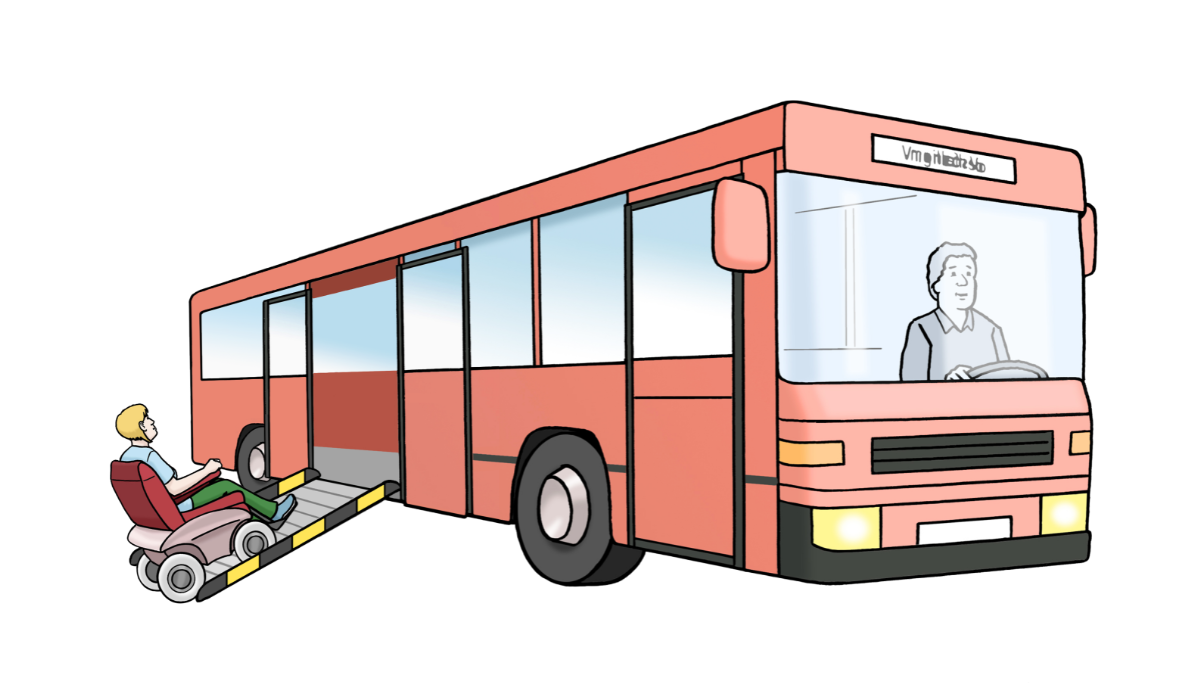
6. What is Haus der Kunst?
Das Haus der Kunst ist ein öffentliches Museum.
Es hat keine eigene Sammlung von Kunst-Werken.
Es gibt immer wechselnde Ausstellungen zu sehen.
It is an important museum for contemporary art.
Contemporary art is the art of people who are still alive.
Or who have not been dead for long.
The museum staff research the history of contemporary art.
There are always various events accompanying the exhibitions.
For example: concerts, lectures and performances.
Performances are presentations with the body.
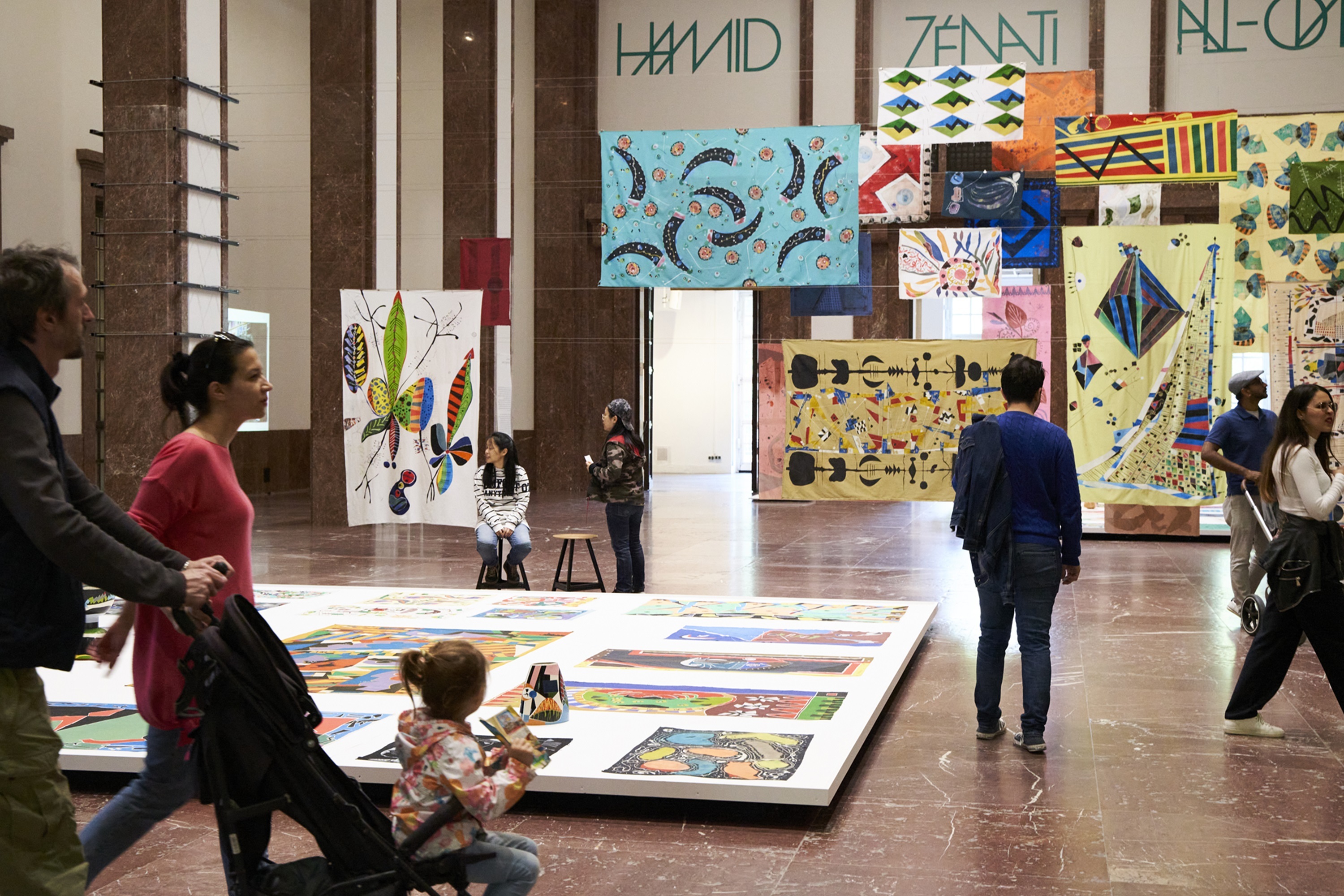
7. What is important to us?
This is important to us:
► Diversity.
Diversity means:
There are many different people.
► Equality.
This means: All people have the same rights.
► Inclusion.
This means: Everyone can take part.
People with disabilities and people without disabilities.
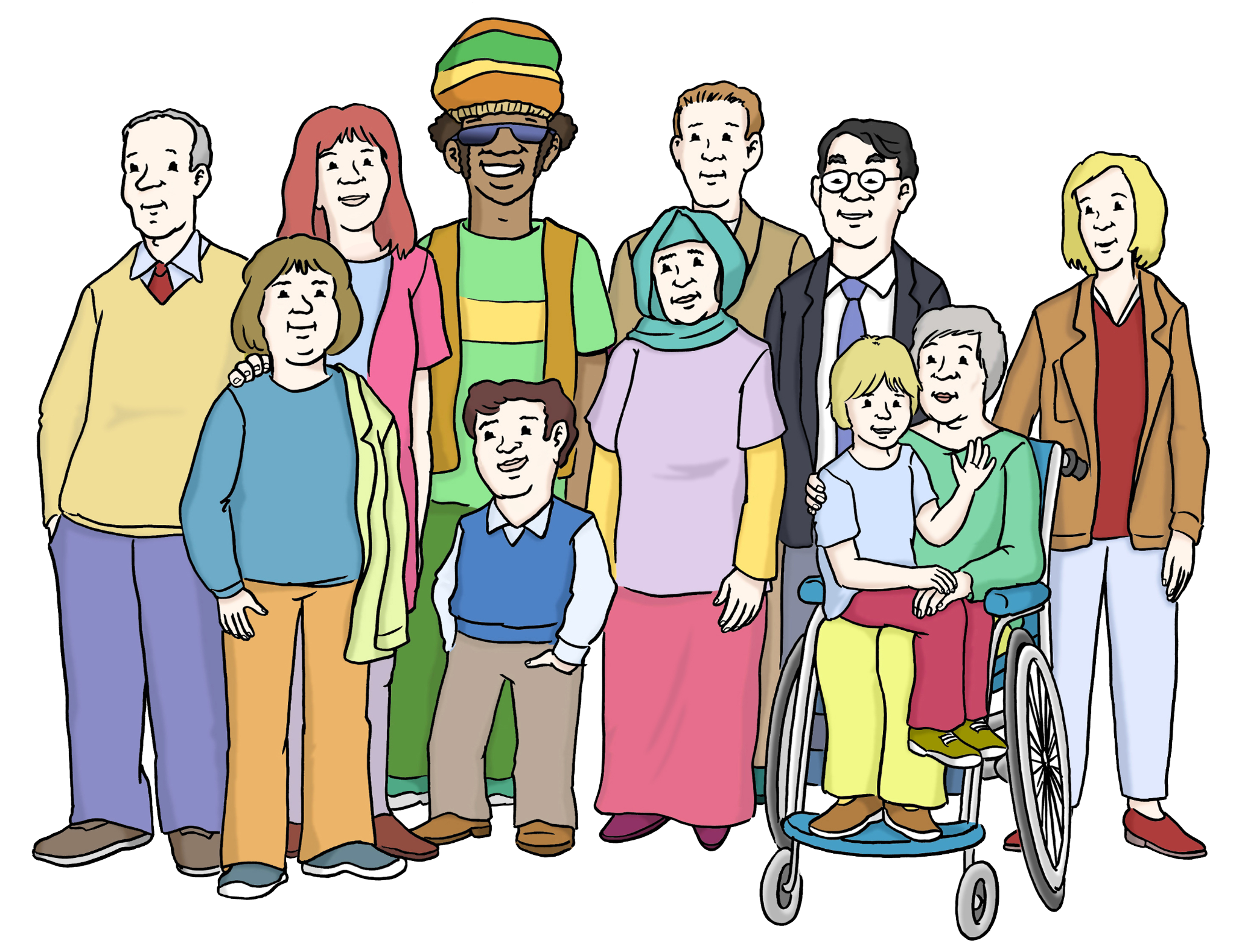
Overall, this means to us:
Everyone is treated equally here:
- Visitors
- Artists
- Employees
All people have the same rights and belong here.
For example:
- Old people and young people.
- People with disabilities
- and people without disabilities.
- People of different faiths.
- People from another country and no matter their skin color.
- Lesbian and gay people.
- All people, regardless of their gender:
- Women, men, inter people, trans-people.
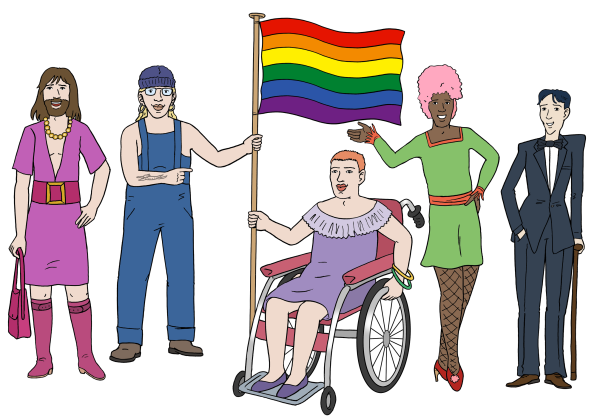
8. What services are available for our visitors with disabilities?
- We have wall texts in Easy Read (in German).
- We organise guided tours in German sign language for which there are fixed dates.
- We organize guided tours for blind and visually impaired people on fixed dates.
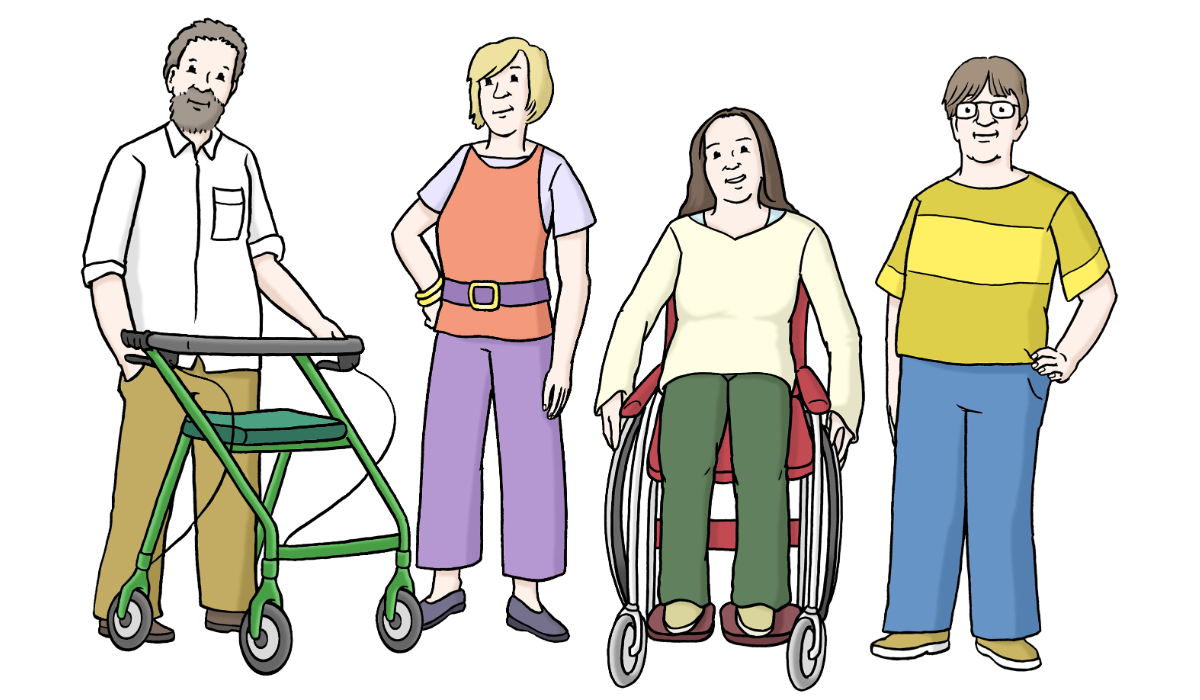
9. Important to know:
- We lend out wheelchairs and chairs free of charge at the ticket desk.
You can take the lift to every floor. - There are toilets for wheelchair users on the ground floor.
- There are toilets for wheelchair users on the ground floor.
- We do not have a guidance system for visually impaired people.
Please come with an accompanying person!
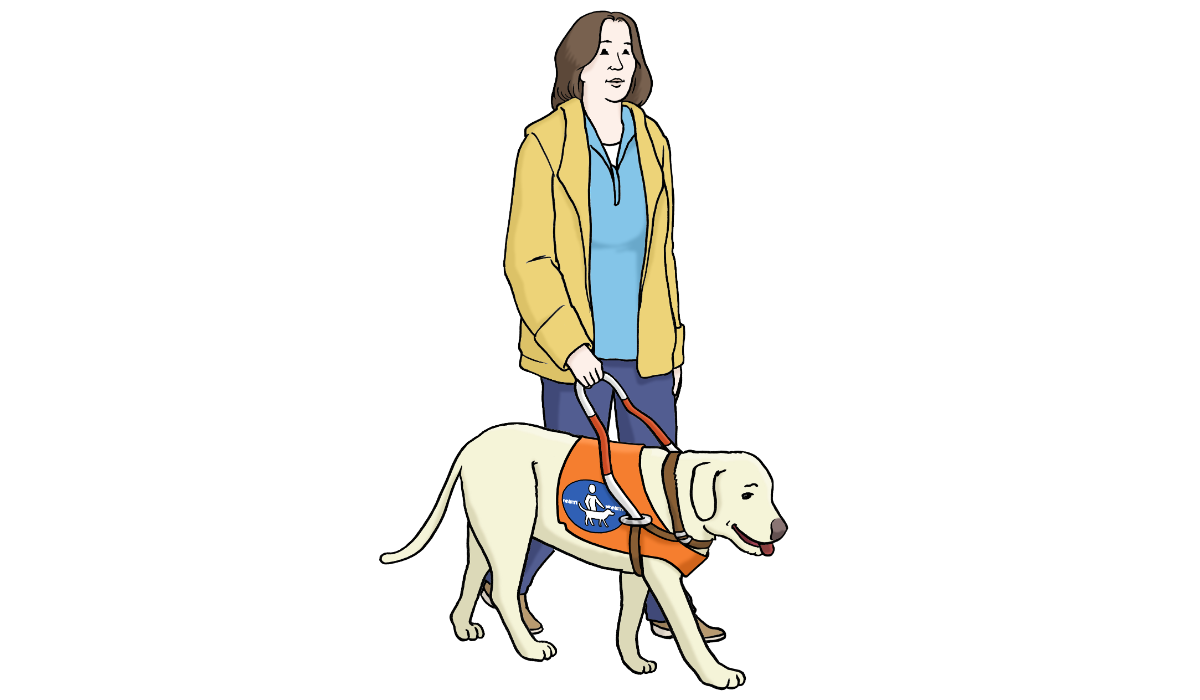
10. Which exhibitions can I visit?
► Philippe Parreno. Voices
Philippe Parreno is a French artist.
His exhibition at Haus der Kunst is called Voices.
It is pronounced: Weusses.
It means: Voices.
Voices is a new kind of exhibition.
It is not about individual artworks.
It is about a new experience of space and time.
In the largest room of the exhibition, there is a huge screen.
We see a landscape in Spain in real time.
This means we are seeing exactly what is happening there at that moment.
Technically, the landscape is connected to Haus der Kunst.
For this, there is a tower antenna in a display case in the first room.
And a large computer at the back of the exhibition.
When something happens there, something also happens here.
For example:
If it gets warm in Spain, heat lamps turn on here.
If the wind blows in Spain, a fan starts here.
Two dancers are constantly moving through the exhibition.
They transform the objects in the space with their voices and movements.
Pay attention to the changes in the room:
Objects rise and fall.
Lights switch on and off.
Human and technology merge.
Another voice can be heard in the rooms.
It is not always understandable.
It speaks a new language.
The language is called ∂A.
The voice is familiar.
It belongs to Susanne Daubner,
Germany’s most well-known newsreader.
But the voice has no body.
Its source is unknown.
It is as if an invisible presence were there.
The voices transform the rooms here.
But they also create a connection to the landscape in Spain.
Human, nature, and technology are intertwined.
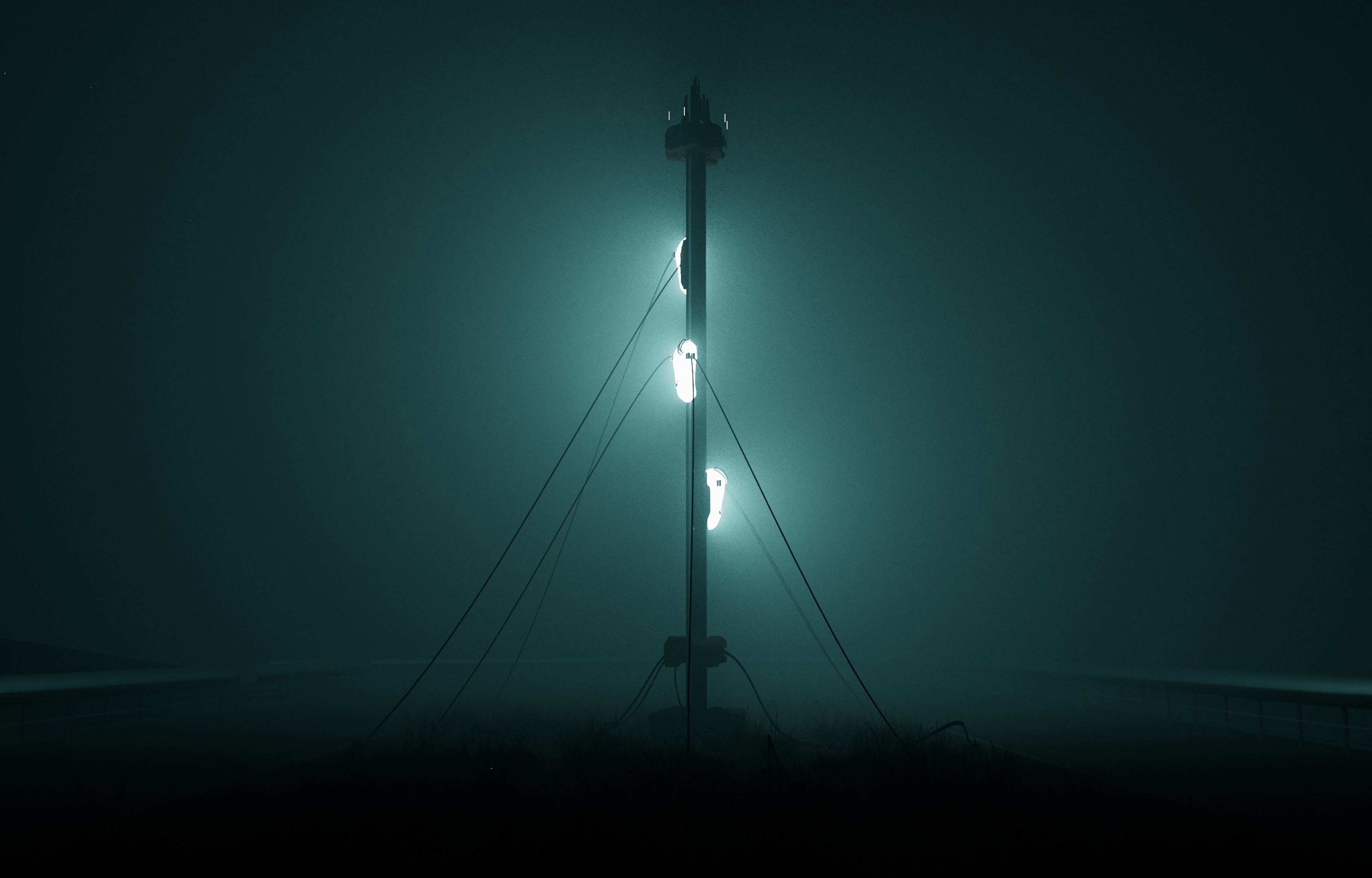
► Shu Lea Cheang. KI$$ KI$$
This is an exhibition of works by the artist Shu Lea Cheang.
She was born in 1954.
She was born in Taiwan.
She lived in the US for a long time.
Shu Lea Cheang creates films and installations.
An installation is a work of art made up of many parts.
For example, various objects, films or sound.
These installations are always spread throughout the whole room.
Sometimes they also include works by other artists.
Shu Lea Cheang works with digital technology.
This includes, for example, the internet and artificial intelligence.
These are computer programmes that are able to co-think.
Shu Lea Cheang deals with the influence of technology on our lives.
Waste is an important topic for her:
Real waste and digital waste.
Digital waste are old files, for example.
And everything that is stored on a computer or mobile phone.
Her works remind us of the consequences of digital technology:
- It is changing our cities.
- It is changing our language.
- This creates data trash.
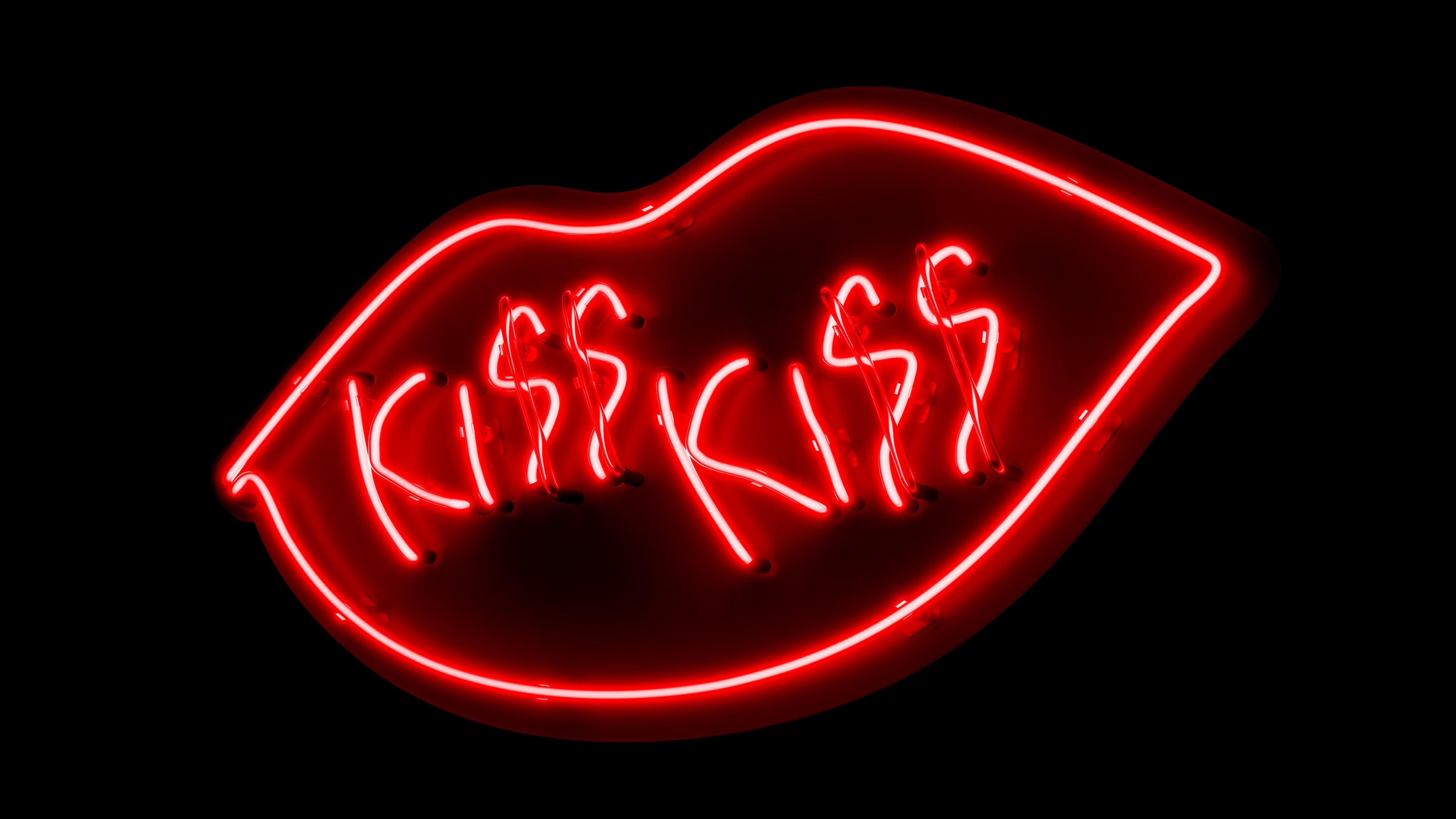
► Velvet Terrorism: Pussy Riot's Russia
This exhibition is about a group of artists.
The group is from Russia.
Their name is Pussy Riot.
This group has been around since 2011.
It organises art actions on the street.
The artists play loud music and sing.
They wear colourful beanies over their faces.
It is important to the artists in all their actions:
There is no violence.
The lyrics of their songs are about politics.
Pussy Riot is against the politics of Vladimir Putin.
Vladimir Putin is the President of Russia.
The group is primarily against this:
- You are not allowed to speak your mind freely in Russia.
- Russia is at war with Ukraine.
It's dangerous in Russia:
If you are against state policy.
The government punishes people:
If they have opinions that differ from those of the state.
Pussy Riot was also punished.
Two artists were imprisoned.
They later had to leave Russia.
They can no longer return to their home country.
In this exhibition, a member of Pussy Riot tells her story.
Her name is Maria Alyokhina.
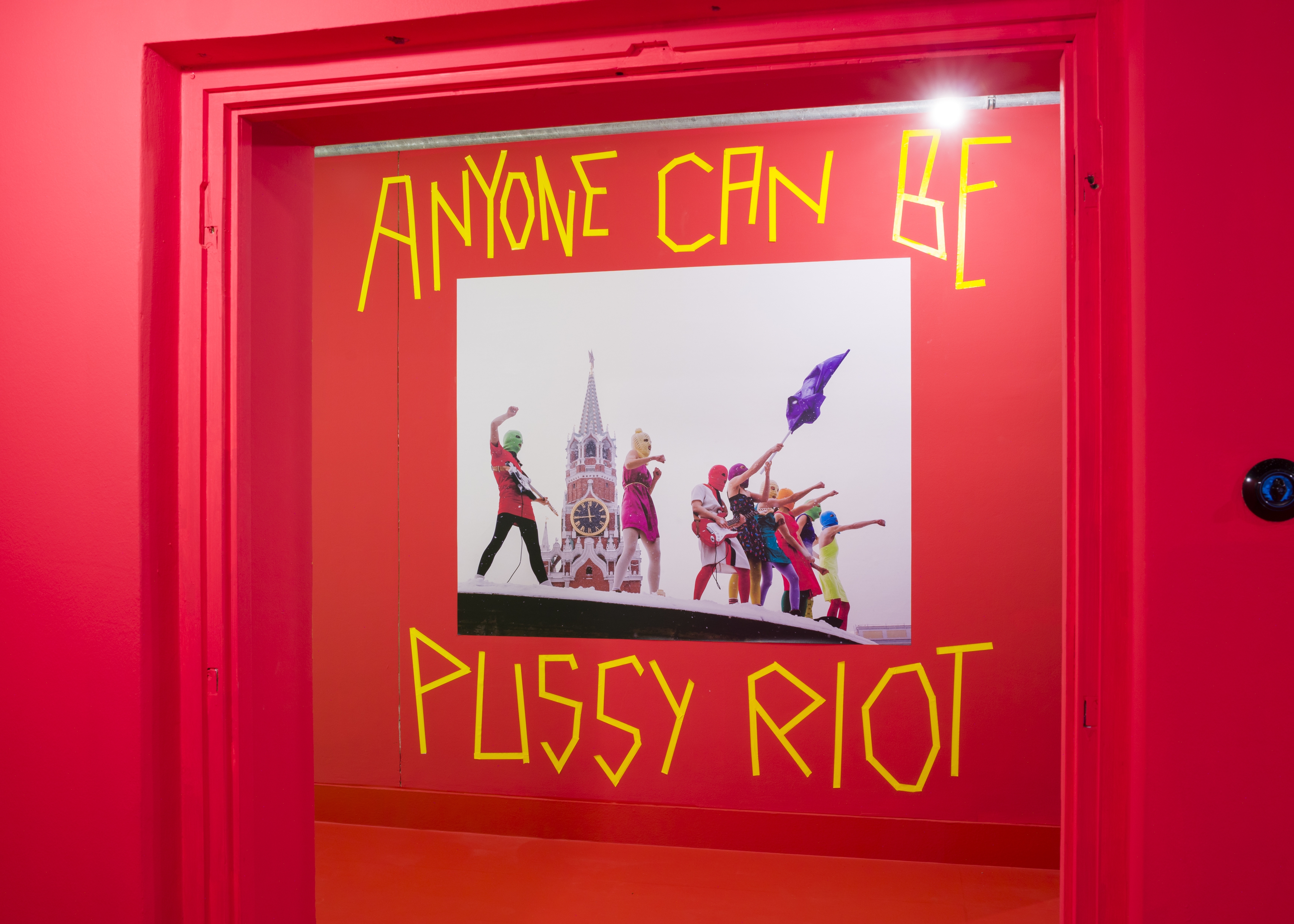
► TUNE
TUNE is the name of a programme series at Haus der Kunst.
The programme is a mixture of sound, music and visual art.
It takes place almost every month as a live programme.
A different artist is always invited to take part in the programme.
They then play a concert on 2 evenings.
Or they put on a performance.
Before there is always a joint discussion.
TUNE is also an exhibition.
An artist receives a commission for this.
This happens about twice a year.
The artist is then invited to come up with
a sound art work for the Terrassen-Saal.
This is a large room in the Haus der Kunst.
You can only hear this sound art work.
You can't see it.
The content of TUNE fits in with the Haus der Kunst programme.
They deal with similar themes.
It is about small and big experiences in our lives today.
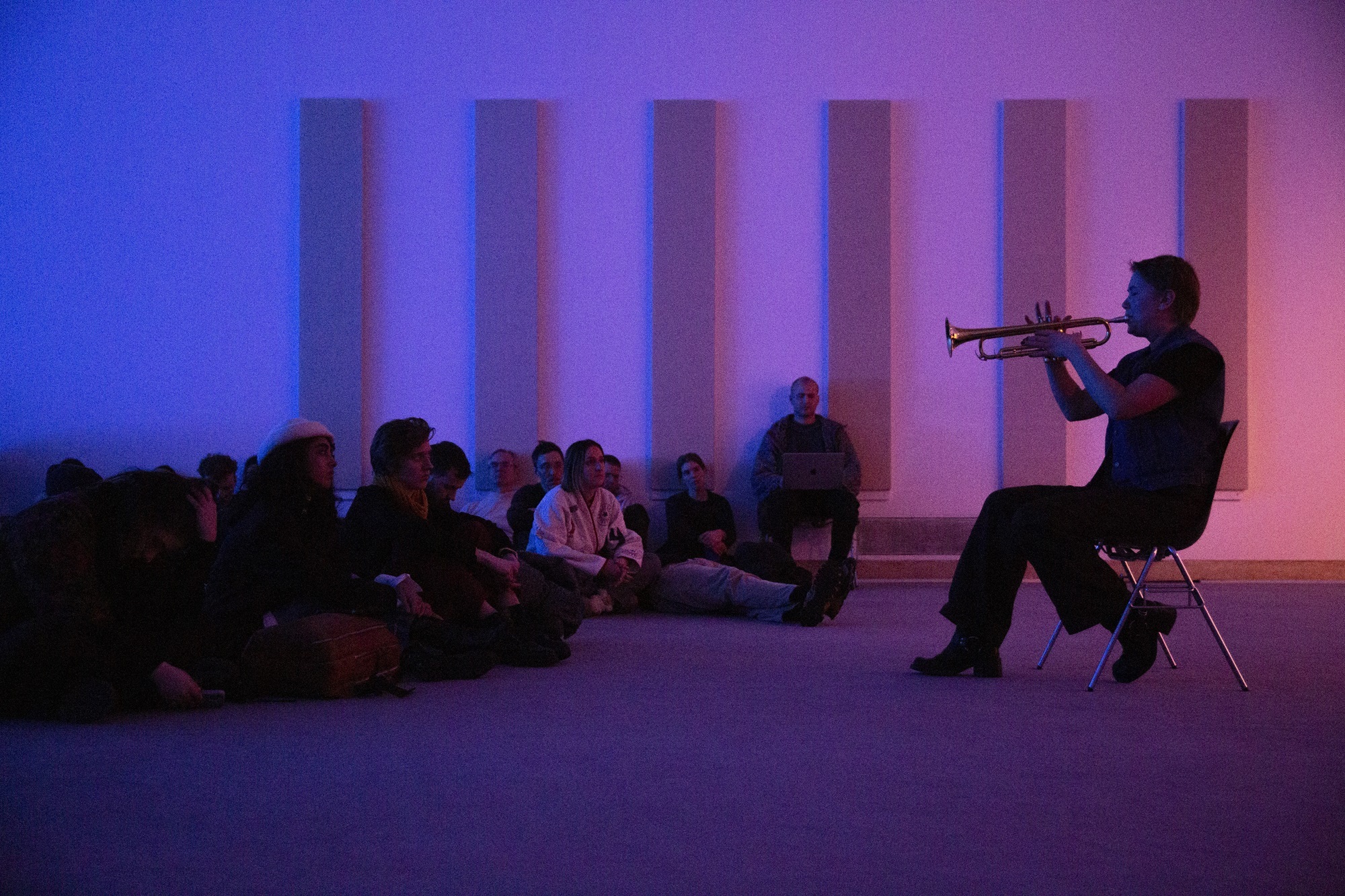
► Archive Gallery
There is always an exhibition to visit in one room.
It is on the ground floor.
It is called: Archive Gallery.
An archive is a room.
In it you collect old documents and things.
For example: Photos, films, newspaper articles or furniture.
The Archive Gallery revolves around the history of Haus der Kunst.
The entry for the Archive Gallery is free.
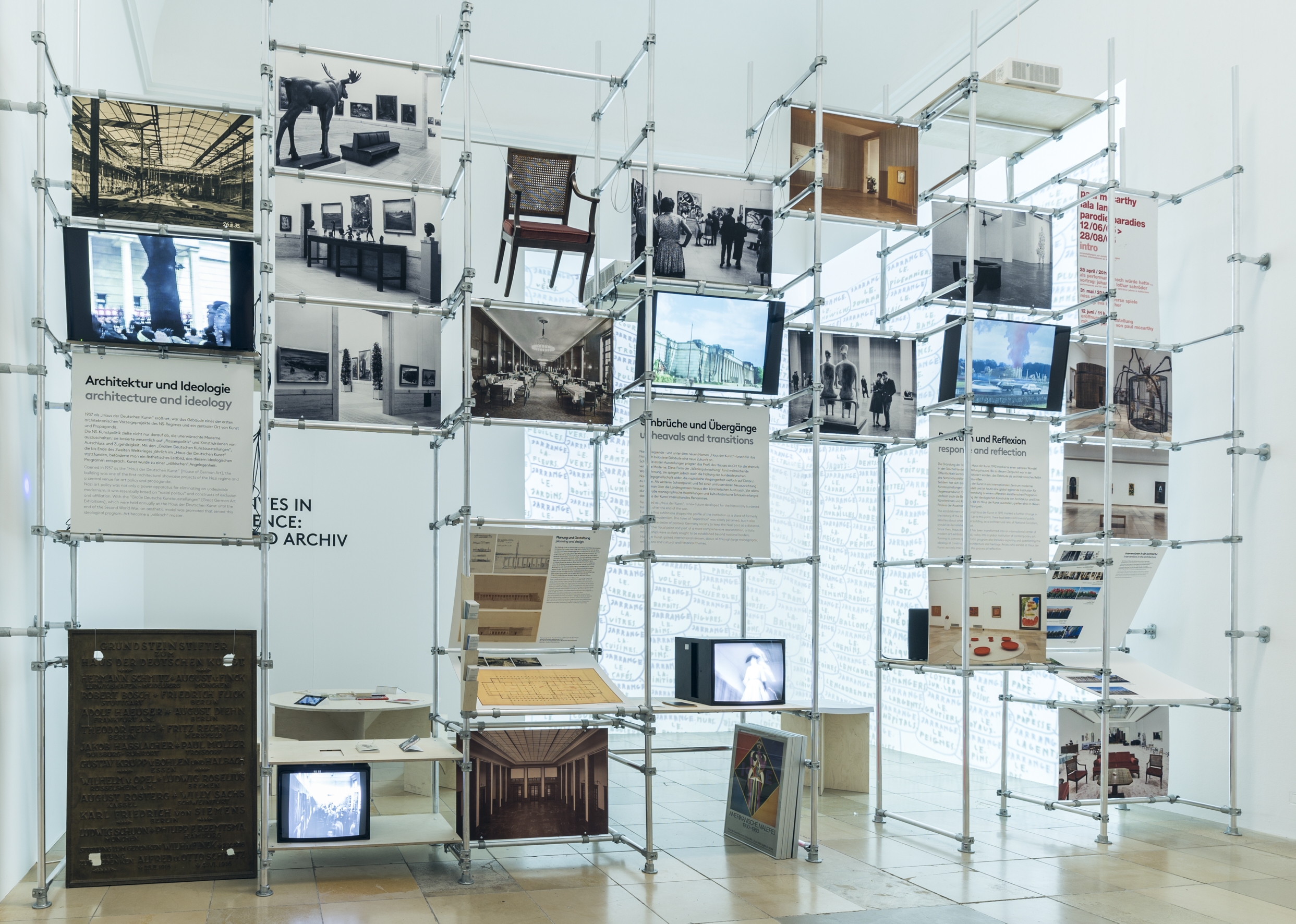
► Exhibition of Exhibitions
This exhibition is like a book you can walk into.
It shows photos of exhibitions at Haus der Kunst.
You can see how the Haus der Kunst has changed.
Today it is a major centre for contemporary art from all over the world.
The Haus der Kunst Foundation was established in 1992.
A foundation wants to achieve something specific.
It spends money, for example.
The aim of the Haus der Kunst is:
Art of today should be shown here.
Haus der Kunst has organised more than 300 exhibitions since 1993.
Many of these exhibitions were special.
Because they have showcased new art,
by people they were not yet familiar with.
Through these exhibitions, people see the history of art differently.
There were ideas about how to organise exhibitions.
These ideas were new and different.
This exhibition is part of a work.
Things are collected again and again.
Photos, for example.
That's called archiving.
The exhibition helps you to think:
About the history and exhibitions of Haus der Kunst.
But it also helps if you want to look to the future.
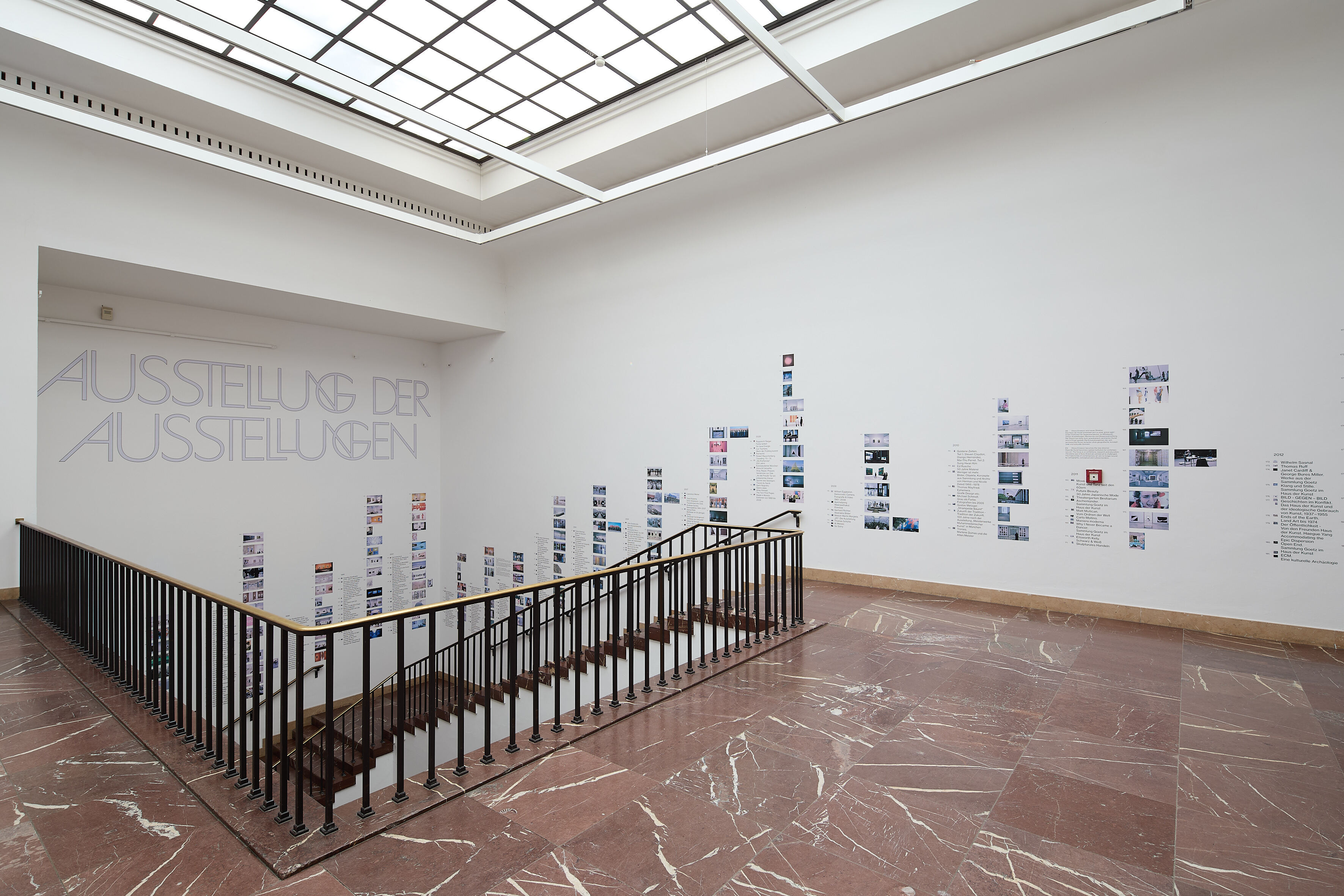
11. What is the history of Haus der Kunst?
1937 to 1945
The Haus der Kunst was inaugurated in 1937.
That was during the period of the Nazi regime.
In Germany, this was the period from 1933 to 1945.
At that time, not everyone had the same rights.
Many people were excluded:
- Because of their religion.
- Because of where they were born.
- Because of their sexuality.
- Because of a disability.
- Because of their political opinion.
These people were persecuted back then.
Many were murdered.
Back then, this building was called Haus der Deutschen Kunst.
This means: House of German Art.
There was an exhibition here every year:
The Große Deutsche Kunst-Ausstellung (Great German Art Exhibition).
Only art that fitted in with the politics of
the Nazi regime was shown.
The Nazis did not want to display pictures by Jewish artists.
And they didn't want to show any modern art.
For example:
No abstract paintings were allowed to be displayed.
Abstract means:
You can't identify any objects or people.
Many artists were excluded during this time.
They were not allowed to work in their profession.
They were not allowed to show their art.
The Große Deutsche Kunst-Ausstellung existed until the end of the Second World War.
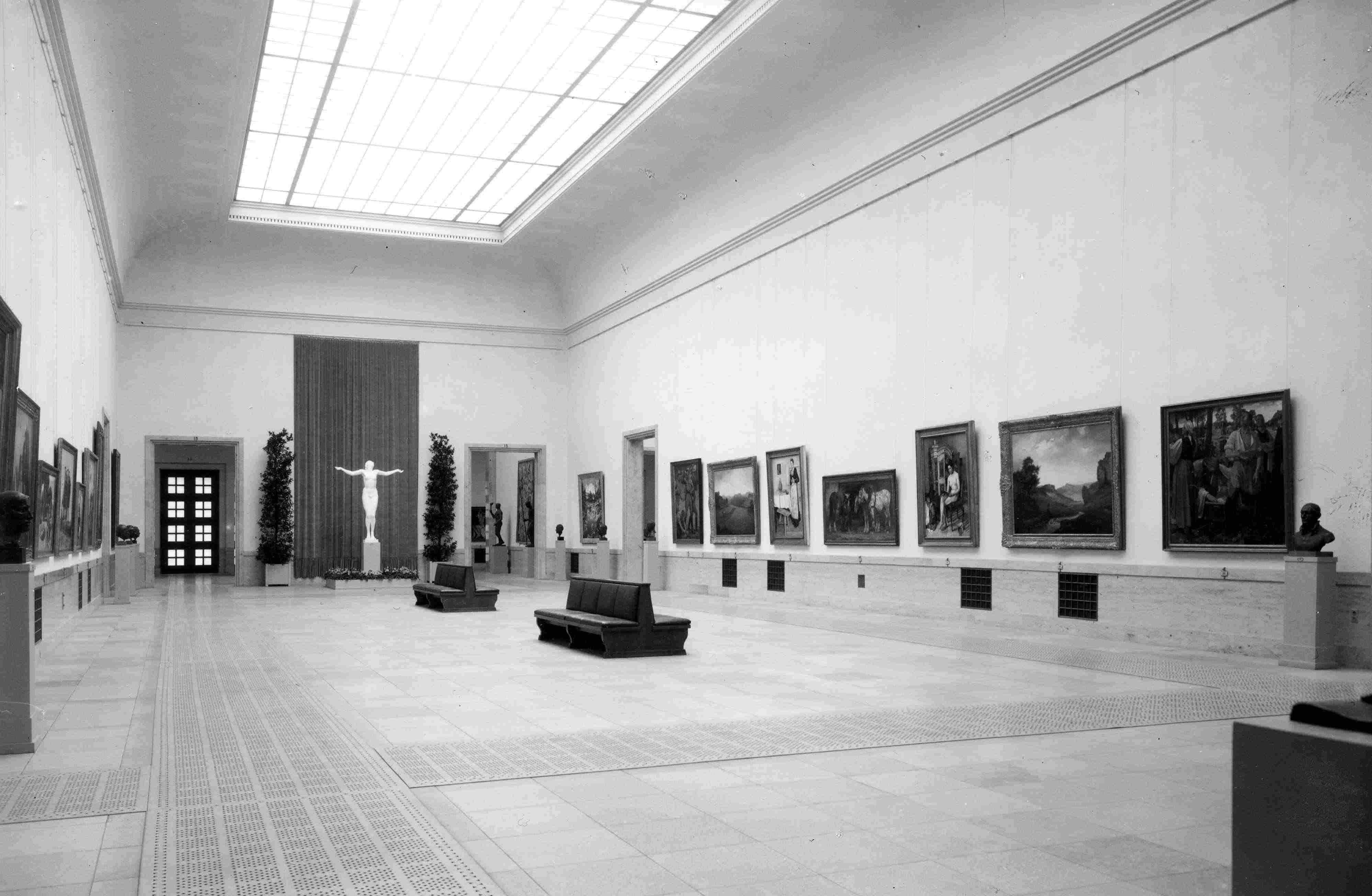
1945 to 1991
After the Second World War, the Haus der Deutschen Kunst was given a new name:
Haus der Kunst.
This marked the beginning of a new era for the museum.
Modern works of art were shown.
Art was shown that had been excluded under National Socialism.
This made the Haus der Kunst famous all over the world.
During this time, it was also under consideration:
If Haus der Kunst should be demolished.
Because it was a Nazi building.
And because it could be reminiscent of the ideas of the Nazis.
From that you can get:
This is how Germans deal with their history.
Many did not want to talk about the Nazi regime.
There were only a few exhibitions that also explained the history of this house.
From 1992
Stiftung Haus der Kunst was established in 1992.
Stiftung means Foundation.
A foundation wants to achieve something specific
It spends money on this, for example.
The aim of Haus der Kunst is:
To show today's art here.
Today, Haus der Kunst is known throughout the world as a centre for contemporary art.
It works with artists from many different countries.
It has become an important museum for contemporary art.
Das Haus zeigt viele verschiedene Arten von Kunst.
The house shows many different types of art.
And today the museum is engaged with its own history.
The artists deal with the history of Haus der Kunst in the exhibitions too.
Do you have any more questions?
Then give us a call!
Telephone: 089 – 211 27 113
Phone-times: Monday to Friday, 10 am to 5 pm
Or write us an e-mail.
E-Mail: mail@hausderkunst.de
We are looking forward to your visit!
Easy Read tested by people with learning difficulties
www.einfachverstehen.de
Member of the Easy Read Network
Pictures: © Lebenshilfe für Menschen mit geistiger Behinderung Bremen e.V.,
Draftsman Stefan Albers, Atelier Fleetinsel, 2013
Easy-Read-Sign: © Inclusion Europe
Quality mark for Easy Read: © Netzwerk Leichte Sprache e.V.